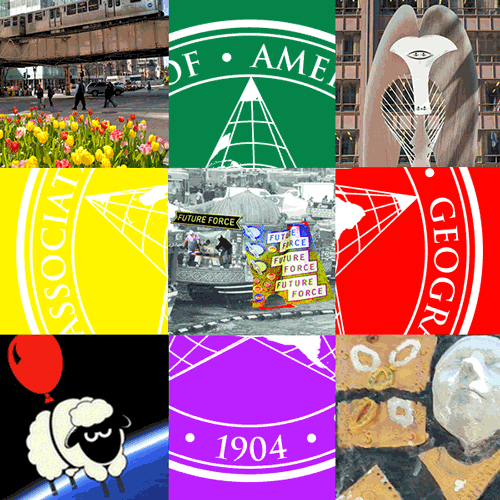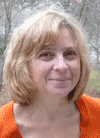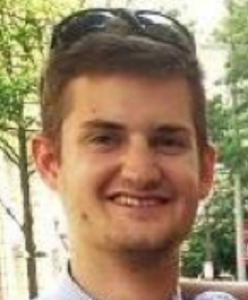Op-Ed: Preemption and Scalar Politics, from Living Wages to Hydraulic Fracturing
If municipal political geographies seem boring, think again. In Texas, where we study municipal oil and gas drilling ordinances with support from the National Science Foundation (and live in cities with active drilling), fundamental questions are being raised: What are state governments for? What are municipalities for? How do opposing sides frame their struggles to determine the locus of regulation and control over activities like oil and gas drilling and hydraulic fracturing (fracking)?
The decade-long boom in unconventional hydrocarbon extraction by fracking has sparked debates throughout the US. Although distribution of impacts and benefits receive most media attention, disputes over authority to regulate oil and gas development have sprung up in Pennsylvania, Colorado, and New York, for example. Surprisingly, Texas — the leading US oil and gas producer and historic innovator of all-things-hydrocarbon (including extraction and production technologies, and oil and gas law) — has thus far remained largely above the regulatory litigation fray. Although some might attribute this to the state’s wildcatter culture and long embrace of oil rig landscapes, it also stems from the strong home rule powers of Texas municipalities. Indeed, in recent years, many Dallas-Fort Worth area municipalities have used their state-sanctioned powers to regulate drilling activities within their corporate limits. However, state legislators are now challenging their ability to do so.
It started in November 2014 when 59% of voters in the City of Denton passed a fracking ban. The next day, the Texas Oil and Gas Association (TxOGA) filed a lawsuit arguing that Denton’s ban “is preempted by Texas state law and therefore unconstitutional.” According to TxOGA, the outcome of the popular vote was “an impermissible intrusion” on the powers of the Texas Railroad Commission (RRC; the state oil and gas regulatory authority) and the Texas Commission on Environmental Quality. The speed with which the lawsuit was filed suggests that reliance on the doctrine of preemption was well considered before the vote.
In December 2014, a second preemption response to Denton’s ban came from State Representative Phil King who filed two bills to the Texas Legislature that target local government regulatory authority. House Bill 539 specifically targets oil and gas regulations, and would force cities to identify and compensate the state for any lost revenues that an oil and gas regulation might cause. House Bill 540 would mandate that cities submit any proposed new voter-initiated ordinance or elimination of an ordinance (and not just those relating to oil and gas extraction) to the Texas attorney general for review. The attorney general would then decide if the city has authority to adopt or remove the ordinance. And recently introduced Senate Bill 440, by Senator Konni Burton, gets right to the preemptive point: “A county or municipality may not prohibit hydraulic fracturing treatment of oil or gas wells.”
A third preemption issue became apparent in January 2015 when TxOGA bombarded College Station City Council with claims that a proposed 1,500 foot setback between residences and drilling pads amounted to a “de facto ban” on fracking, with the unstated threat that a preemption lawsuit would be filed against the city. In public hearings, councilmembers repeated the “de facto ban” talking point and stressed that state agencies regulate the “means and methods” of oil and gas production — in addition to possible air and water contamination — and not cities.
Contemporary preemption legislation can be understood as “expressions of a politics of scale that is emerging at the geographical interface between processes of urban restructuring and state territorial restructuring” (Brenner 1999, 432). By simultaneously expanding the power of a higher level of government and reducing the power of a lower level of government (Weiland 1999), preemption is a way to rescale, redistribute, and remove city and local government regulatory authority over planning, environmental hazards, and business activities. Prominent examples in the US and Texas include preemptive legislation pertaining to tobacco sales and smoking bans (Laposata et al 2014), city and regional sustainability planning efforts (Trapenberg Frick et al 2015), municipal bans on genetically engineered crops (Roff 2008), and local living wages (Lafer 2013) and non-discrimination ordinances (Blanchard 2015).
Long a strategy of corporations and their lobbying arm, particularly big tobacco, preemption is also a central strategy of the conservative front organization, the American Legislative Exchange Council (ALEC). Established by conservative activists in 1973, ALEC aims to influence state legislative agendas towards government downsizing, deregulation, tax restraint and preemption of local control (Nichols 2011). Comprised of 2,000 state-legislator members and others, ALEC also is openly anti-climate change and anti-United Nations.
Central to preemption rhetoric and the goals of ALEC is the idea that a patchwork of local government regulations and zoning laws hurt industry and consumers by creating an unpredictable environment for the private sector (Goho 2012). But there are serious implications for local populations when local governments, with more direct knowledge of the local situation, geography, and environment, are unable to regulate activities that might affect residents’ health, safety, and welfare.
Returning to the Texas oil and gas context, it turns out that Phil King is an ALEC national chair and recipient of funds from ALEC’s corporate members. The head of the Texas RRC also receives campaign funds from ALEC. And newly-elected Texas Governor Greg Abbott recently lamented that Texas was “being Californianized” by stealth: “you may not even be noticing it…It’s being done at the city level with bag bans, fracking bans, tree-cutting bans. We’re forming a patchwork quilt of bans and rules and regulations that is eroding the Texas model” (Austin-American Statesman, 2015).
In Texas, we are witnessing a fascinating experiment in political geography, with Governor Abbott’s warning of stealthy municipalities creating a “patchwork quilt” and state legislators seeking to usurp the power of cities when they disagree with how people vote in municipal elections. As governor, legislators, and municipal officials struggle over the proper site for regulation, they are proving what geographers have long known: municipal political geographies are definitely not boring, but rather important sites for geographical inquiry.
Matthew Fry
Department of Geography
University of North Texas
Christian Brannstrom
Department of Geography
Texas A&M University
References
Austin-American Statesman. 2015. Gov.-elect Abbott: End local bans on bags, fracking, tree-cutting. 8 Janurary, 2015.
Blanchard, B. 2015. Nondiscrimination Ordinance Battle Goes Statewide. The Texas Tribune, 24 January 2014.
Brenner, N. 1999. Globalisation as Reterritorialisation: The Re-scaling of Urban Governance in the European Union. Urban Studies, 36(3): 431-451. DOI: 10.1080/0042098993466.
Goho, S.A. 2012. Municipalities and Hydraulic Fracturing: Trends in State Preemption. Planning & Environmental Law, 64(7): 3-9. DOI:10.1080/15480755.2012.699757.
Lafer, G. 2013. The Legislative Attack on American Wages and Labor Standards, 2011–2012. Economic Policy Institute Briefing Paper #364, 31 October 2013.
Laposata, E., Kennedy, A.P., and Glantz, S.A. 2014. When Tobacco Targets Direct Democracy. Journal of Health Politics, Policy and Law, 39(3): 537-564. DOI: 10.1215/03616878-2682603.
Nichols, J. 2011. ALEC exposed. The Nation, 1 August 2011, www.thenation.com.
Roff, R.J. 2008. Preempting to nothing: neoliberalism and the fight to de/re-regulate agricultural biotechnology. Geoforum 39: 1423–1438. DOI: 10.1016/j.geoforum.2007.12.005.
Trapenberg Frick, K., Weinzimmer, D. and Waddell, P. 2015. The politics of sustainable development opposition: State legislative efforts to stop the United Nation’s Agenda 21 in the United States. Urban Studies, 52(2): 209–232. DOI: 10.1177/0042098014528397.
Weiland, P.A. 1999. Preemption of Local Efforts to Protect the Environment: Implications for Local Government Officials. Virginia Environmental Law Journal, 18: 467-506



 CAMP AAG, the AAG’s new onsite childcare program, is now accepting advance registrations for the 2015 Annual Meeting. The Association has selected Accent on Children’s Arrangements, Inc. (ACCENT) to design and run the new children’s program and to provide full-time, professionally managed and staffed childcare at the Hyatt Regency Hotel in Chicago from April 21-25, 2015.
CAMP AAG, the AAG’s new onsite childcare program, is now accepting advance registrations for the 2015 Annual Meeting. The Association has selected Accent on Children’s Arrangements, Inc. (ACCENT) to design and run the new children’s program and to provide full-time, professionally managed and staffed childcare at the Hyatt Regency Hotel in Chicago from April 21-25, 2015. 
 Joe Chestnut Interns at AAG for Winter Semester
Joe Chestnut Interns at AAG for Winter Semester